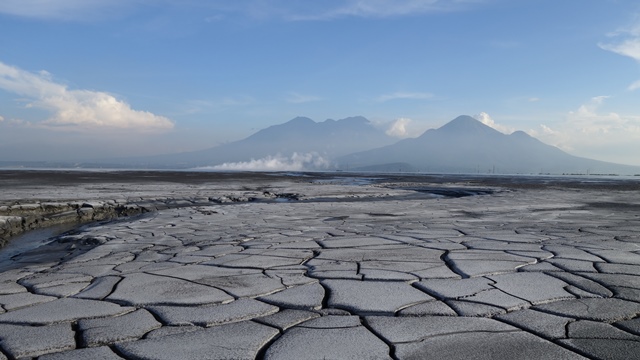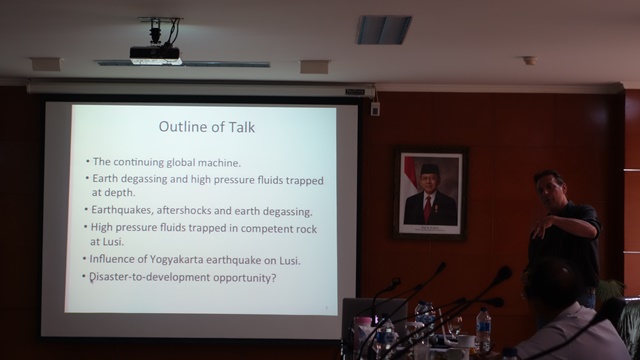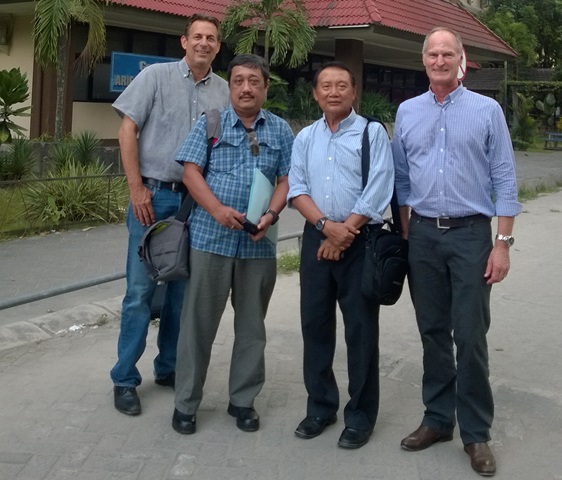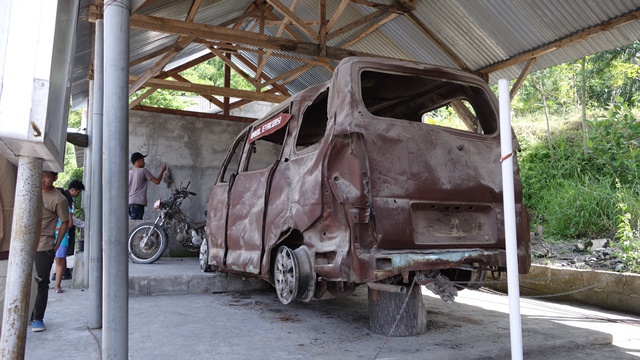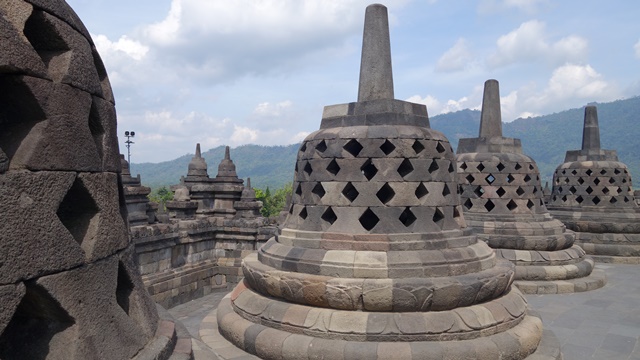Source of world’s largest mud volcano is still in dispute 10 years on from first eruption
Lusi is possibly the youngest sedimentary-hosted hydrothermal/geothermal system on Earth and is located a few kilometers to the NE of the Arjuno-Welirang volcanic complex. Picture: Humanitus Sidoarjo Fund
THICK, hot sludge burst through the earth’s crust in the middle of a city more than a decade ago. It hasn’t stopped flowing since.IN A country desperate for modern infrastructure, the multi-lane modern toll road in Indonesia’s East Java province was a welcome rarity.
Heavy with cars and trucks, it connected the country’s second largest city of Surabaya with the province’s south.
But today, parts of the road are almost empty, the asphalt cracked and overgrown, the railings rusting in the humidity.
Because what’s the point in maintaining a highway that has been enveloped by billions of tonnes of smelly, sticky, grey goo from the centre of the earth?
It began erupting liquid more than a decade ago and hasn’t stopped since — it may not for another three decades. At its peak 180,000 cubic metres of mud a day spewed to the surface.
“Usually mud volcanoes grow slowly, through layer upon layer of mud,” wrote Richard Davies, from the UK’s Newcastle University and Michael Manga, from UC Berkeley in a piece of The Conversation.
“What happened in Sidoarjo in 2006 is unique, with Lusi by far the fastest growing mud volcano we know of, having drowned surrounding houses, factories, places of worship and schools in a foul-smelling, emulsion-like mud.”
“This is the first time in history that we’ve witnessed the birth of a major mud volcano in an urban area,” Dr Mark Tingay of the University of Adelaide, one of the leading researchers on the eruption’s cause, told the ABC in 2015.
So far more than 100,000 people have had to be relocated from the sludge, described by oil industry experts as having the consistency of tomato sauce.
In an attempt to stop the flow, Javanese mystics have taken to unconventional methods. Spells have been cast and goats and chickens sacrificed to the sludge — all to no avail.
Local scientists turfed in hundreds of concrete balls, 40 centimetres in diameter, hoping their “vibration and rotation” will make the boiling mud “tired”.
Nothing has worked. All that can be done is try and contain the mud flow by building huge dykes around the spurting pool and sucking the mud out into the sea.
The alternative would be to cut off East Java entirely off and potentially let the sludge inundate one of Indonesia’s largest metropolis’.
A RARE EVENT
Despite being little known, mud volcanoes are surprisingly common. Azerbaijan has 400 alone but they are usually far smaller and last for only a short time.
They are formed when water, deep below the earth’s surface, is heated and then mixes with subterranean mineral deposits to make a mud.
They often stay underground unless they find a way to the surface, usually through a geological fault coupled with intense pressure.
A paper released last month by geologists Stephen A Miller and Andriano Mazzini reassert the view that magnitude 6.3 earthquake some 300 kms away in Yogyakarta just days before the eruption, was chiefly to blame for the mud volcano.
“The response of Lusi to the Yogyakarta earthquake falls directly within the range of earthquake triggering phenomena of similar hydrothermal/geothermal systems, suggesting a natural trigger as the more likely culprit,” the pair wrote in Marine and Petroleum Geology.
Others say the earthquake was just coincidental and believe a gas drilling operation at the site is to blame.
Mr Davis and Mr Manga say the earthquake theory doesn’t stack up. The quake was too far away and liquefaction is accompanied by large gas releases that were not detected with Lusi. Their thoughts are backed by Adelaide’s Dr Tingay.
“There have been bigger and closer earthquakes that have not triggered eruptions, while other earthquakes have caused greater shaking and vibrations right at the site of Lusi, yet nothing happened on those occasion,” they wrote.
The further the original eruption slides into the past, the harder it will be to find out what really happened, say the experts.
“We strongly favour the argument that the drilling was responsible, but neither of us were at the site of the incident almost two kilometres underground at the time to witness it, and more than ten years on it’s clear the data and reasoning behind our argument have yet to convince everyone,” said Mr Davis and Mr Manga.
The drilling company has insisted they followed safety regulations and no blame has been officially laid. But nonetheless, the company has been ordered to pay compensation to those people displaced.
Owners of many of the submerged houses have been seeking around 300 million rupiah in damages, or about $30,000 each. Some say the money has flowed to their back accounts at a rate far slower than the mud.
It’s a constant struggle to keep Lusi’s never ending mud flow in check. Should one dyke fail the railway line and roads from north to south could slowly been swallowed by hot sludge.
Billions of dollars has been spent patching up the infrastructure around the eruption, rebuilding homes and businesses.
There has also been a very expensive diversion built to connect the two ends of the multi lane highway, the empty stubs of which still lead to one of the world’s most extraordinary disaster sites.
Story by Benedict Brook news.com.au



